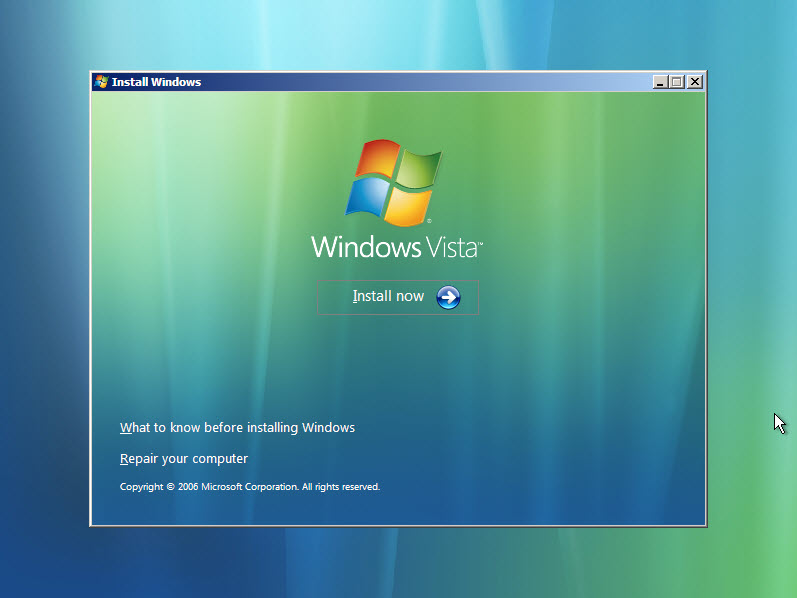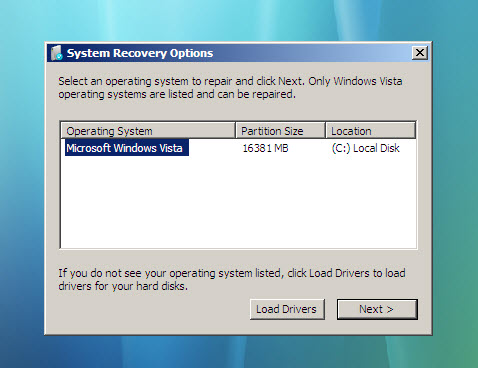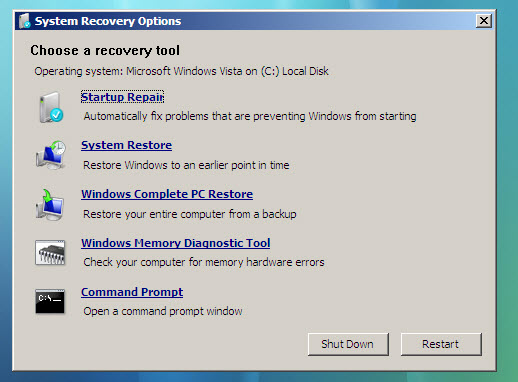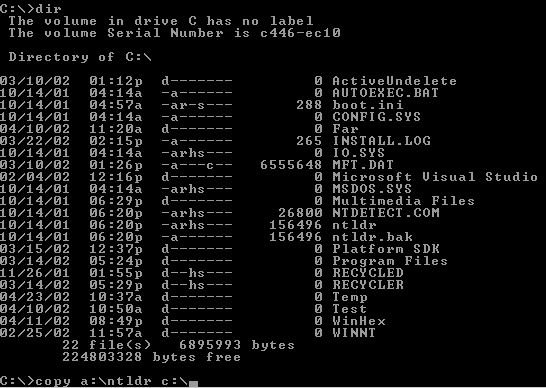Recovery Concepts: Missed System Files
Missing or Corrupted System Files
For the Operating System to boot properly, system files are required to be intact and safe. The table below lists the main files required:
| Operating System | List of Files |
|---|---|
| Windows 95 / 98 / ME | msdos.sys, config.sys, autoexec.bat, system.ini, system.dat, user.dat, etc. |
| Windows NT / 2000 / XP/ Windows 2003 Server | NTLDR, ntdetect.com, boot.ini, located at the root folder of the bootable volume, Registry files (i.e., SAM, SECURITY, SYSTEM and SOFTWARE), etc. |
| Windows Vista, Windows 2008 Server, Windows 7 / 8 / 10 / 11 | BOOTMGR and Boot folder located at the root folder of the bootable volume. Boot folder should contain BCD file containing bootable configuration. |
If these files have been deleted, corrupted or damaged by a virus, Windows will be unable to boot. Often, you will see an error messages like NTLDR is missing ... or BOOTMGR is missing...
Once it is determined that the operating system won't start, the next step in the recovery process is to check the existence and safety of these vital system files.
Recovery in Windows Vista / Server 2008 / Windows 7 / 8
To do this in Windows Vista / 2008 / Windows 7 / 8:
- Boot the system from the installation DVD-ROM
- Select a language and other settings (if needed) and click Next
- Do NOT click Install Now button. Click Repair your computer.

- Select a drive where Windows was installed. You can locate drivers if proper drive is not displayed. Click Next.

- Click Startup Repair. At this step you can restore full Windows system from a backup, or rollback Windows to an earlier point of time (if Startup Repair does not help).

- Wait until Windows repairs itself and reboot a machine
Recovery in Windows NT / 2000 / XP / 2003
To do this in Windows NT-based systems use the Emergency Repair Process, Recovery Console or third party recovery software.
Emergency Repair Process
To proceed with Emergency Repair Process, you need an Emergency Repair Disk (ERD). It is recommended that you create an ERD immediately after you install and customize Windows. To create one now, use the "Backup" utility by clicking Start > Programs > Accessories > System Tools. Follow the on-screen directions.
You can use the ERD to repair a damaged boot sector, damaged MBR, repair or replace missing or damaged NT Loader (NTLDR) and ntdetect.com files.
If you do not have an ERD, the emergency repair process can attempt to locate your Windows installation and start repairing your system, but it may not be able to do so.
To run the process, boot from the Windows installation floppy disks or CD, and choose the Repair option when the system suggests you to proceed with installation or repairing. Press R to run the Emergency Repair Process and choose Fast or Manual Repair option. Fast Repair is recommended for most users, Manual Repair is to be used by Administrators and advanced users only.
If the emergency repair process is successful, your computer will automatically restart and you should have a working system.
Recovery Console
Recovery Console is a command line utility similar to MS-DOS command line. With it you can list and display folder content, copy, delete, replace files, format drives and perform many other administrative tasks.
To run Recovery Console, boot from Windows installation disks or CD and choose the Repair option. When the system suggests that you proceed with installation or repairing and then press C to run Recovery Console.
You will see a logon screen with Administrator's password. After you are logged on - you can display the drive's contents, check the existence and safety of critical files and, if it appropriate, copy files back to the root location if they have been accidentally deleted.

Recovery Software
Third party recovery software in most cases does not allow you to deal with system files due to the risk of further damage to the system. However you can use a recovery utility to check for the existence and safety of these files.
Recovery in Windows 95 / 98 / ME
To do this in Windows 95 / 98 / ME - boot the system in Command Prompt Mode, or from a bootable floppy or CD-ROM. Check for system files with the DOS command "dir". If they are missing - copy them back from installation media.
